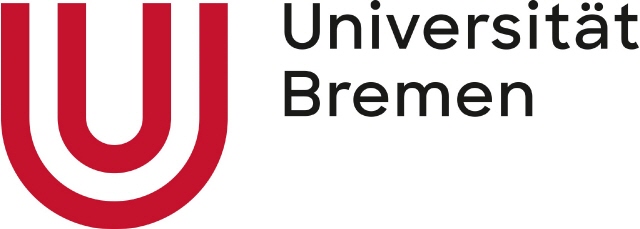Carbon Cycle + Paleoclimatology
- Carbon Cycle
- Lecturer: Peter Köhler
- Paleoclimatology
- Lecturer: Dr. M. Werner
Lecture content Carbon cycle:
The ongoing rise in the concentration of carbon dioxide and other greenhouse gases in the atmosphere leads to warming of the Earth. In this course we will start at details about the Kyoto protokol how to reduce future CO2 rise, and on future projections of climate change in the 21st century contained in the recent IPCC report. We will try to understand how changes in atmospheric CO2 leads to changes in temperature, today, in the future and during past climates. For this aim the cycling of carbon through the main important reservoirs (atmosphere, terrestrial biosphere, ocean, ocean sediments) will be investigated.
Topics covered (13 lectures planned):
- Introduction, Overview on C data sets, time scales
- Radiative forcing
- Emission scenarios and the future
- Terrestrial biosphere I
- Terrestrial biosphere II
- Gas Exchange Ocean --- Atmosphere
- Ocean 1, Dissolved Inorganic Carbon
- Ocean 2, Organic Carbon
- Ocean 3, CaCO3 cycle
- Orbital Forcing
- The Holocene, last 10,000 yr
- The Pleistocene, last 2,000,000 yr
- Weathering and The Phanerozoic, last 600,000,00 yr
Lecture content Paleoclimatology:
This lecture will give an overview about the climate system and its changes during the past, focussing on the Quaternary. The main components and processes of the climate system as well as available different dating and analyses methods for paleoclimate research will be explained. Key paleoclimate archives, e.g. ice cores, marine sediment cores and different terrestrial records, will be discussed. The general overview will be supplemented by a presentation of some of the latest research results and most important open questions within the related fields of paleoclimate research.
Structure:
· Climate and climate variability: The climate system, climate variability of the past, incoming solar Insolation and energy balance of the Earth, ice ages and warm interstadials,
· Dating methods: Radioisotopes, carbon-14, uran dating methods, luminescence, paleomagnetism, biological dating, dendrochronology
· Ice cores: Ice archives of Greenland and Antarctica, drilling and dating ice cores, stable water isotopes, aerosols, trace gas measurements, coupling of Northern and Southern Hemisphere, tropical ice core records
· Marine sediments and corals: Foraminifera, alkenons, Thermohaline Circulation, oceanic stratigraphy, past changes of the sea level, coral records
· Terrestrial archives: Loess sequences, glacier fluctuations, speleothem records, lake sediments, pollen data
· Paleoclimate Modelling: theoretical concepts, fundamental equations, general circulation models, development of Earth System models, realization of paleoclimate simulations
Literature
- William F. Ruddiman, Earth's Climate – Past and Future, 2nd Edition, W. H. Freeman and Company Publishers, 2008.
- Dynamical Paleoclimatology - A generalized theory of global climate change, B. Barry Saltzman, Academic Press, San Diego, 2001.
- Raymond S. Bradley: Paleoclimatology - Reconstructing Climates of the Quaternary, Academic Press, 1999.
